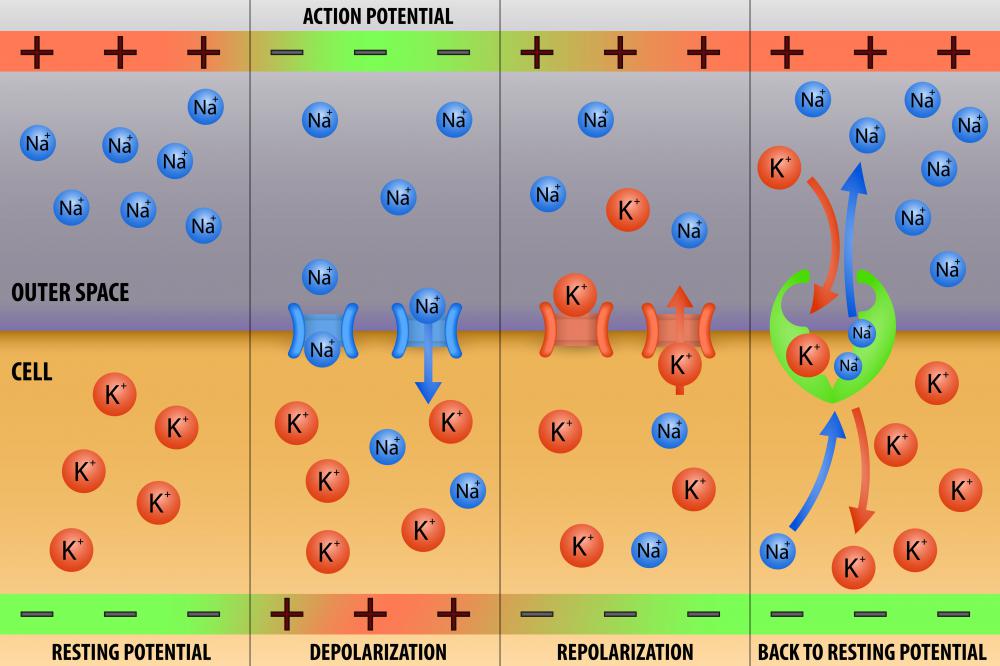At WiseGEEK, we're committed to delivering accurate, trustworthy information. Our expert-authored content is rigorously fact-checked and sourced from credible authorities. Discover how we uphold the highest standards in providing you with reliable knowledge.
What Is Cardiac Action Potential?
A cardiac action potential is an event in the excitable tissue of the cardiac system that, in turn, causes the muscle contraction necessary for blood distribution. Action potentials are complex processes but, like most things, can be simplified to make comprehension easier. Simply stated, a cardiac action potential is an electrical event brought about by a nervous or environmental stimulus responsible for the regular contraction or beating of the heart.
Not every cell in the body is capable of an action potential. Medical professionals call cells in which this electrical event can occur excitable cells, describing their ability to change states. An electrical event is a change in charge, which actually occurs through a physical mechanism. There are gatelike structures that open an close, allowing certain charged particles in and out of a cell. This exchange of particles actually changes the charge gradient of the cell in relation to its outer environment, and when this gradient reaches a certain threshold, an action potential occurs.

It is improper to picture a cardiac action potential as a single event. There are, in fact, many action potentials that contribute to physiological action, the frequency of which influences that action itself. A cardiac action potential is unique from those occurring in other parts of the body due to its self-regulatory mechanism. Most action potentials require an outer stimulus from the body or environment, whereas the heart relies on a node system that regularly triggers action potentials. Linked to the nervous system, these nodes allow for heart regulation as needed.

If a person is exercising, he or she may need more blood distribution to meet the oxygen demands of physical activity. One way to achieve this is to increase the heart's rate of contraction. The nervous system picks up on this immediate need and takes action, causing the regulatory nodes of the heart to produce cardiac action potentials more frequently. This increase in frequency transfers throughout the heart's chambers, causing more contractions per minute, hence increasing blood flow to a level necessary to meet the physiological demands.

The human heart is an amazing feature of the body, without which life could not exist. The heart relies on the cardiac action potential for its regulation. This is the way in which the heart can respond to the need for changes, allowing it to keep up with an ever-changing body.
AS FEATURED ON:
AS FEATURED ON:













Discuss this Article
Post your comments